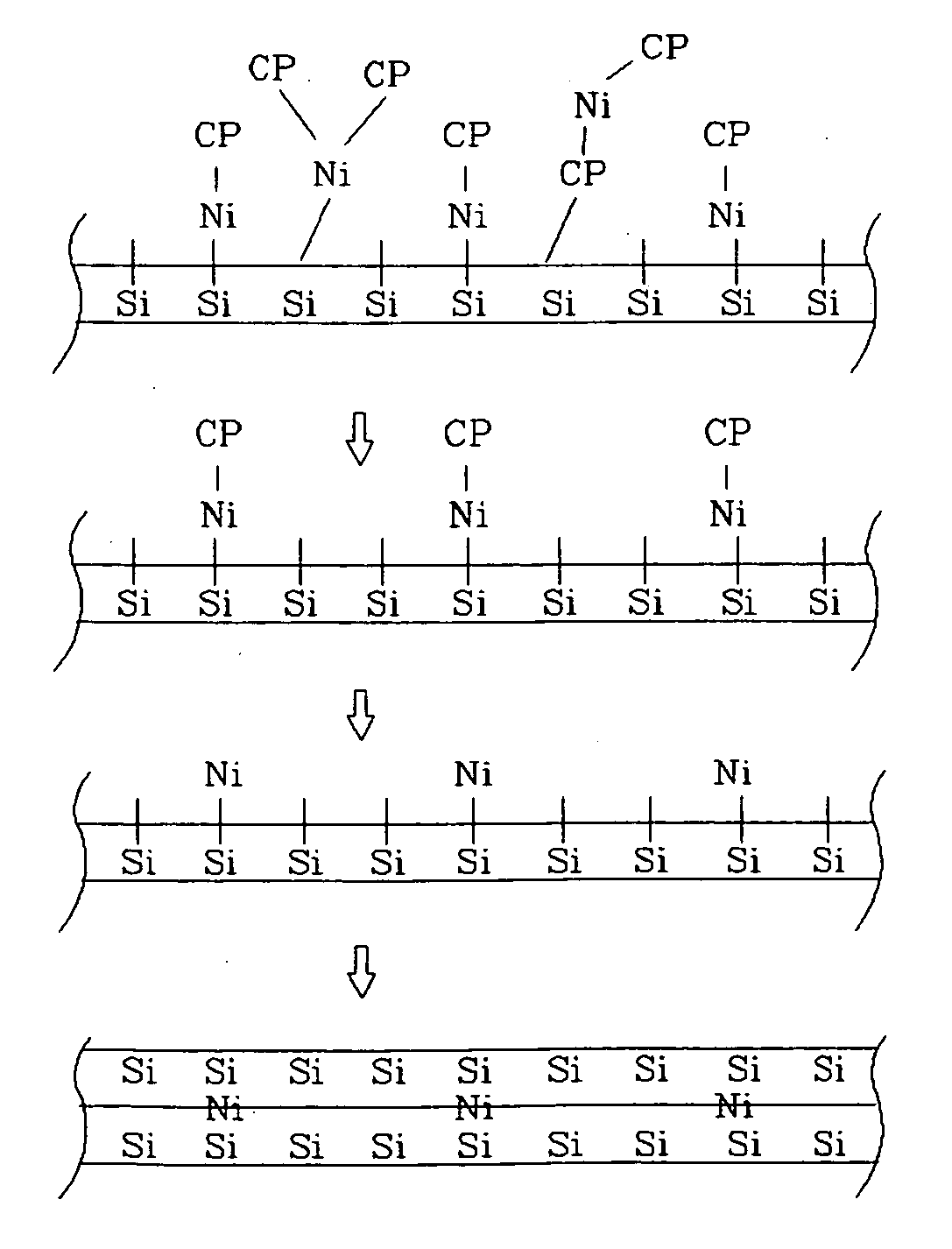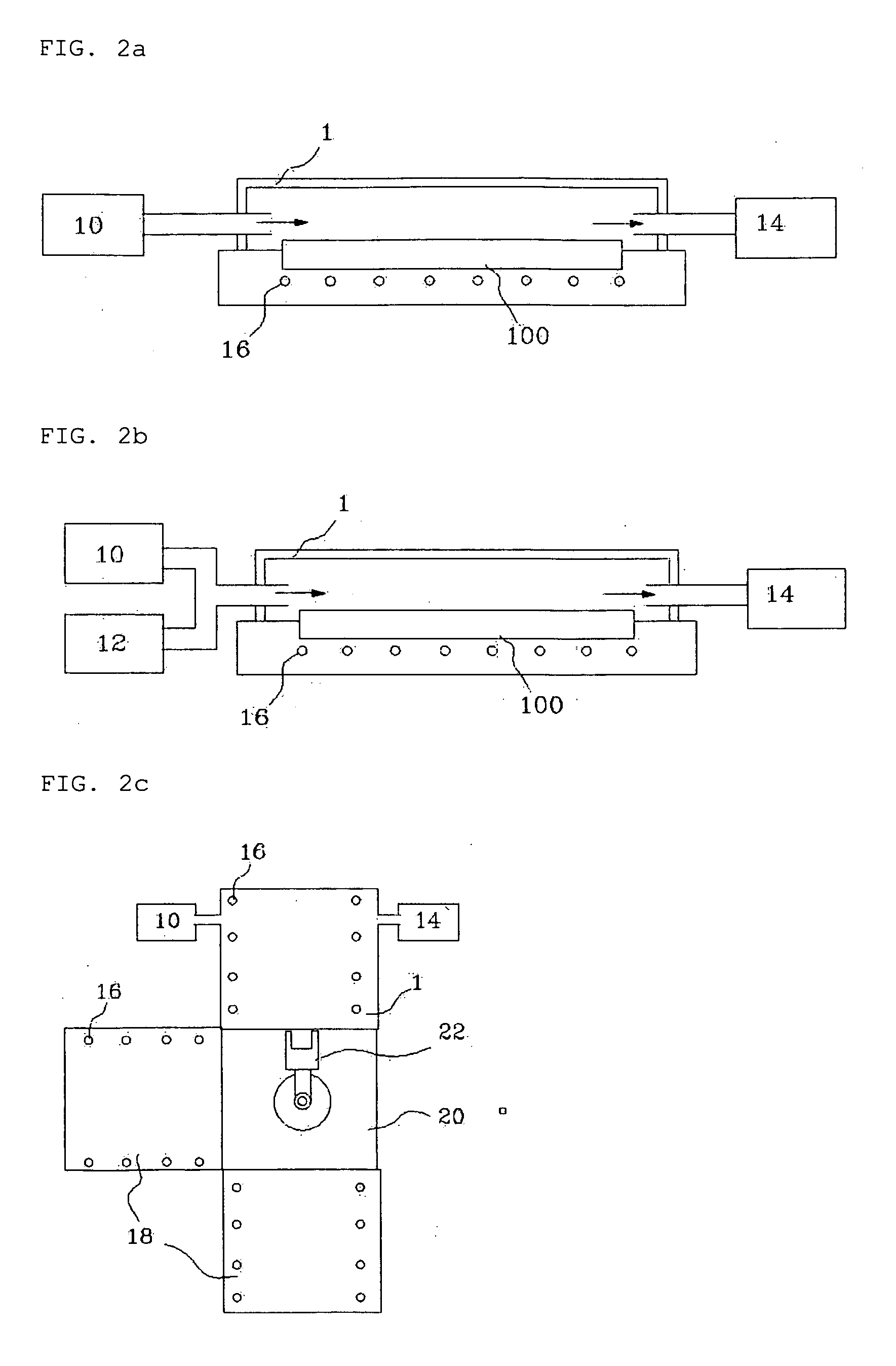Apparatus and method for forming polycrystalline silicon thin film
a technology of polycrystalline silicon and polycrystalline silicon, applied in the direction of chemistry apparatus and processes, crystal growth processes, coatings, etc., can solve the problems of aforementioned pecvd limitation, the deposition process of the semiconductor device manufacturing process cannot be directly applied to the lcd manufacturing process, and the difference in the manufacturing process of lcd, so as to reduce the contamination, increase the crystallizing rate of amorphous silicon, and reduce the crystallizing temperature of amorphous silicon
- Summary
- Abstract
- Description
- Claims
- Application Information
AI Technical Summary
Benefits of technology
Problems solved by technology
Method used
Image
Examples
Embodiment Construction
[0065] The present invention will now be described more fully with reference to the accompanying drawings, in which exemplary embodiments of the invention are shown.
[0066]FIGS. 2A to 2C are concept views of atomic layer deposition (ALD) apparatuses designed to distribute a metal nucleus (Ni nucleus) as a catalyst on a glass substrate according to the present invention, FIG. 3 is a concept view showing that nickel molecules having a preoccupied region are adsorbed by Ni(C5H5)2 on an amorphous silicon, FIG. 4 is a side concept view illustrating steps that nickel nucleus as a metal nucleus according to the present invention is created, and FIGS. 5A to 5C are magnified photographs of polysilicon thin films illustrating that the grain size of the polysilicon thin films is adjusted according to an adjustment of distribution density of metal nuclei.
[0067] Also, FIG. 6 is a side concept view illustrating a step of adjusting a distribution density according to the present invention and FIG...
PUM
| Property | Measurement | Unit |
|---|---|---|
| temperature | aaaaa | aaaaa |
| pressure | aaaaa | aaaaa |
| temperature | aaaaa | aaaaa |
Abstract
Description
Claims
Application Information
 Login to View More
Login to View More - R&D
- Intellectual Property
- Life Sciences
- Materials
- Tech Scout
- Unparalleled Data Quality
- Higher Quality Content
- 60% Fewer Hallucinations
Browse by: Latest US Patents, China's latest patents, Technical Efficacy Thesaurus, Application Domain, Technology Topic, Popular Technical Reports.
© 2025 PatSnap. All rights reserved.Legal|Privacy policy|Modern Slavery Act Transparency Statement|Sitemap|About US| Contact US: help@patsnap.com



